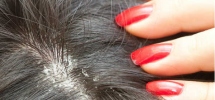Tim Ellis, principal physiotherapist at Excel Physiotherapy and Wellness in Mascot, Australia, used to spend summer in the Swiss Alps when he was about 18 years old, mostly rock climbing, hiking, and a bit of skinny dipping in the remote mountain lakes. For him, it was one of those idyllic times when he did not seem to have any cares in the world. He felt close to heaven, like there was no place higher to go, because there literally wasn’t.
Several years after, Tim still has a love affair with all things Swiss. Everything from Switzerland is simply marvelous – from the unparalleled practicality of the Swiss Army knife and the perfect texture of Swiss chocolates to the intricate taste of Swiss cheese, like Emmenthal and Gruyere.

The Greatest Creation Ever – The Swiss Ball
As a physio, Tim has also been working with one of the best Swiss of inventions ever created – the Swiss ball. Originally designed for recovering stroke patients and utilized in Swiss neurological rehabilitation units, the Swiss ball eventually became used for physiotherapy patients in the mid 1990’s.
When Tim was still studying at the University of East London, he once asked this question, “If this can help stroke patients with loss of balance issues, why can’t it help our low back pain patients with a loss of balance, proprioception, and core stability?”
Apparently, Tim was not the only one who asked this question, and the Swiss ball was suddenly used everywhere – in gyms and even in homes as part of workout routines. The big, bright, colorful ball was being used for engaging the core, toning the abs, and stretching tight muscles.
What’s There to Love About the Swiss Ball?
For one, the Swiss ball’s bright, cheerful color is simply adorable. But beyond its aesthetic features, the Swiss ball is an amazing tool for effectively engaging the back’s proprioceptive muscles. It is also helpful in stretching the lower back and hip muscles that, without the Swiss ball, are difficult to stretch without potentially getting an injury. In addition, the Swiss ball enables us to engage our more global muscles, such as the abs, glutes, and paraspinal muscles. The are some of the best reasons why the Swiss ball is simply easy to love. There’s so many uses for this unassuming tool, and many people like physiotherapy patients can benefit from using it for therapy and exercise.
For anyone who spends long hours sitting on a work desk, is suffering from back pains, has tight upper or lower back muscles, wants to improve their core muscles or spine, or simply just wants to have a bit more fun while working out, the Swiss ball is something worth investing in. This colorful thing is not only useful and practical, it is also a charming addition to any space and doesn’t need to be put away after use. You can simply let it stay where it is or put it in a corner to add color to it. Needless to say, the Swiss ball is just a great thing to have, whether in the gym or at home.
Tim Ellis is the Principal Physiotherapist at Excel Physiotherapy and Wellness in Mascot, New South Wales, Australia. He specialises in treating complex necks and backs and developing highly effective exercise programs for his patients. Tim is committed to integrative health, healthy eating, exercise, and life long learning which he shares through his blogs.




